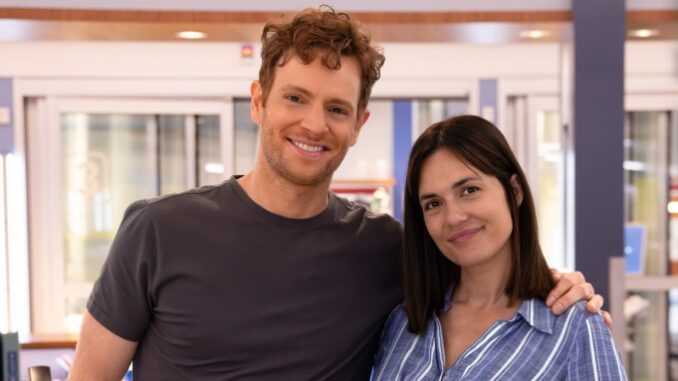
The Heartbeat Shifts: How Budget Changes, Cast Moves, and Story Arcs Shape Chicago Med’s Evolution into Season 11
Entering its eleventh season, “Chicago Med” stands as a testament to the enduring power of the medical drama. But like any long-running show, it hasn’t remained static. Instead, it has evolved, shaped by behind-the-scenes forces like budget changes, impacted by the unavoidable ebb and flow of cast members, and molded by the carefully crafted arcs that keep viewers invested. Understanding these elements is crucial to appreciating how “Chicago Med” continues to reinvent itself and stay relevant in the crowded landscape of television.
One of the most significant, though often invisible, influences on “Chicago Med” is its budget. While specifics are rarely public, the financial realities of television production inevitably dictate certain choices. Early seasons often benefited from a higher budget, allowing for grander sets, more elaborate special effects to portray complex medical procedures, and the flexibility to introduce new characters and story threads. As seasons progress, budget constraints can lead to tighter storytelling, a focus on core characters, and perhaps a reduction in the frequency of large-scale medical crises. This can be seen in the increased emphasis on personal relationships between doctors and nurses, as opposed to solely focusing on high-stakes surgeries and rare diseases. While not necessarily detrimental, these shifts in budgetary allocation inevitably nudge the narrative in different directions, prioritizing character development and interpersonal drama over purely medical spectacle.
The ever-changing roster of cast members also profoundly impacts the show. A beloved actor might depart for new opportunities, forcing writers to rework storylines and introduce new personalities to fill the void. The loss of Dr. Connor Rhodes, for example, necessitated a shift in the dynamics of the emergency department and opened the door for new relationships and professional rivalries. While the departure of established characters can be jarring for viewers, it also presents an opportunity for the show to breathe new life into familiar settings. New characters, with their own unique perspectives and backstories, can inject fresh energy into the narrative, forcing existing characters to adapt and evolve. The introduction of a new attending physician, for example, could challenge the established power dynamics within the hospital, forcing existing doctors to re-evaluate their approaches to medicine and leadership. Ultimately, cast changes, though sometimes lamented by fans, are an essential catalyst for change and prevent the show from becoming stagnant.
Perhaps the most deliberate force shaping “Chicago Med’s” evolution is its carefully constructed story arcs. These arcs, which can span multiple episodes or even entire seasons, delve into the complexities of both the medical world and the personal lives of the characters. Early seasons might have focused on establishing the individual personalities of the doctors and their professional capabilities. As the show matures, the storylines become more intricate, exploring ethical dilemmas, systemic issues within healthcare, and the long-term consequences of trauma on both patients and providers. The opioid crisis, for instance, has been a recurring theme, allowing the show to explore the social and political realities impacting the lives of their patients and the doctors who treat them. These longer narrative threads offer a chance for deeper character development, allowing viewers to connect with the doctors and nurses on a more personal level, and appreciate the moral complexities they face. This shift towards more nuanced and socially conscious storytelling elevates “Chicago Med” beyond a simple medical procedural, turning it into a reflection of contemporary societal challenges.
Looking ahead to Season 11, we can anticipate that these three forces will continue to shape the show’s trajectory. Budgetary considerations will likely influence the scale of medical emergencies depicted and the frequency of elaborate special effects. Further cast changes, both anticipated and unexpected, will necessitate creative adjustments to storylines and open doors for new characters to emerge. And, most importantly, the narrative arcs will likely continue to explore the ethical and social issues facing the medical community, providing a platform for thoughtful commentary on the state of healthcare and the human condition.
In conclusion, “Chicago Med’s” longevity is not simply a result of its captivating medical scenarios. It’s a testament to its ability to adapt and evolve in response to the realities of television production, the dynamics of its cast, and the demands of its audience for compelling storytelling. By understanding the influence of budget changes, cast moves, and story arcs, we can gain a deeper appreciation for the show’s past, present, and the exciting possibilities that lie ahead in Season 11. The heartbeat of “Chicago Med” continues to evolve, reflecting the ever-changing landscape of medicine and the human stories that unfold within its walls.
